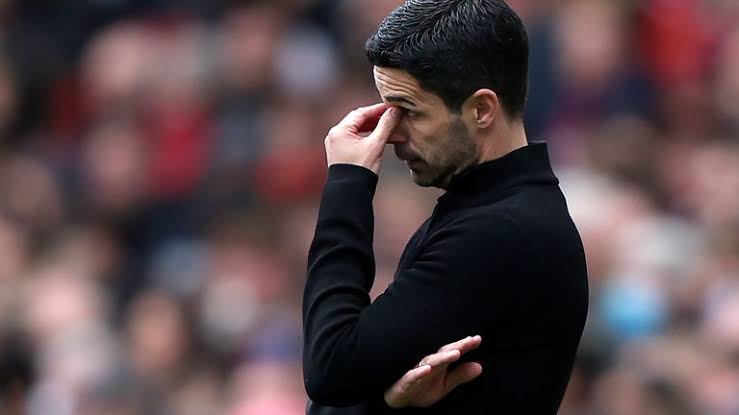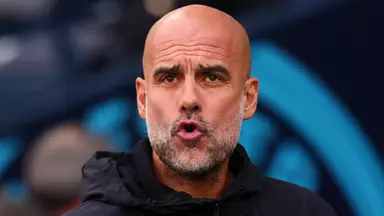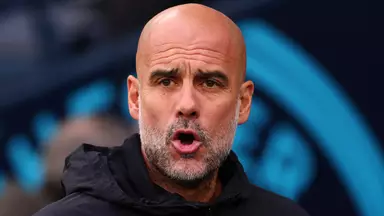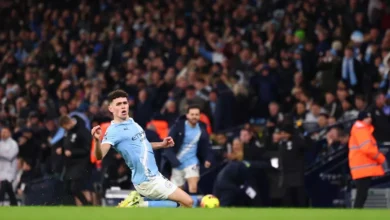The Cross-League Transfer Challenge: Why Premier League Clubs Struggle with International Signings

The modern football transfer market presents one of the most complex puzzles in professional sports. While the allure of Premier League riches continues to attract talent from across the globe, the reality of successfully integrating players from different leagues remains fraught with challenges that extend far beyond simple financial transactions. The pathway from promising performer in one league to Premier League success story is littered with cautionary tales, tactical mismatches, and cultural barriers that even the most sophisticated recruitment departments struggle to navigate.
When Premier League clubs scout players from other European leagues, they face a fundamental challenge that extends beyond mere statistical analysis. Each league operates with distinct tactical philosophies, physical demands, and competitive rhythms that shape how players develop and perform. The Portuguese Primeira Liga, for instance, traditionally emphasizes technical skill and tactical intelligence, while the Championship demands physical robustness and mental resilience. Players who excel in one environment may find themselves woefully unprepared for the demands of another.
The pace of the Premier League represents perhaps the most significant adjustment factor. Unlike leagues where teams may have extended periods to build attacks or reorganize defensively, English football demands split-second decision-making and constant intensity. Players accustomed to having time on the ball in their previous leagues often struggle with the relentless pressing and reduced space available in Premier League matches. This adjustment period can be particularly challenging for creative players and strikers who rely on precise timing and spatial awareness.
Furthermore, the physical demands of English football extend beyond simple strength or speed requirements. The Premier League’s unique blend of aerial duels, physical challenges, and high-tempo running creates a specific fitness profile that players must adapt to. Many talented individuals from technically superior leagues find themselves overwhelmed by the sheer physicality, while others from more physical leagues struggle with the technical precision required at the highest level.
Modern football has embraced data analytics with unprecedented enthusiasm, yet the transfer of statistical success between leagues remains problematic. Goal-scoring records, assist tallies, and defensive metrics that appear impressive in one context may translate poorly to the Premier League environment. The quality of opposition, defensive organization, and overall league competitiveness all influence individual statistics in ways that traditional metrics struggle to capture.
Consider the challenge facing strikers transitioning between leagues. A prolific goalscorer in a league with weaker defensive structures may find Premier League defenses far more organized and difficult to break down. Conversely, a striker who has learned to excel against elite defensive units might find additional space and opportunities in the English game. The conversion rate between leagues is influenced by factors including defensive pressing intensity, goalkeeper quality, and the tactical sophistication of opposing teams.
The pace at which chances are created and converted also varies dramatically between leagues. Some competitions allow for more patient build-up play, creating higher-quality scoring opportunities, while others demand quick transitions and clinical finishing in limited time frames. Players must adapt not only their technique but their mental approach to chance conversion, often requiring significant time to recalibrate their expectations and decision-making processes.
The integration challenges extend far beyond the football pitch into the realm of cultural adaptation. Players arriving in England must navigate not only a new football environment but an entirely different cultural context that influences everything from communication styles to social expectations. The British football culture, with its intense media scrutiny, passionate fan engagement, and unique dressing room dynamics, can be overwhelming for players accustomed to different cultural norms.
Language barriers represent a particularly insidious challenge that affects both on-field performance and off-field integration. While many players possess functional English, the rapid communication required during matches, the nuanced tactical instructions from coaches, and the complex social dynamics within squad hierarchies all demand sophisticated language skills. Misunderstandings in crucial moments can lead to tactical breakdowns, while communication difficulties can isolate players socially, affecting their overall adaptation and performance.
The pressure of English football media represents another significant adjustment factor. Players accustomed to more protective media environments often struggle with the intense scrutiny and constant analysis that accompanies Premier League football. The 24-hour news cycle, social media commentary, and fan expectations create a pressure cooker environment that can negatively impact player confidence and performance, particularly during initial adaptation periods.
Each league develops its own tactical identity over time, influenced by coaching traditions, player development philosophies, and competitive pressures. When players move between leagues, they often encounter tactical systems that demand different skill sets or emphasize different aspects of their game. A midfielder who excelled in a possession-based system may struggle in a more direct, counter-attacking approach, while a defender comfortable with a high defensive line may be exposed in a more conservative tactical setup.
The role definitions within different tactical systems can vary significantly between leagues. A striker’s responsibilities in terms of pressing, link-up play, and defensive contribution may be completely different between their previous club and their new Premier League team. Players must often learn new positional responsibilities while simultaneously adapting to new teammates, coaching methods, and competitive demands.
Formation preferences and tactical flexibility also vary between leagues, affecting how players are utilized and developed. Some leagues favor rigid tactical structures with clearly defined roles, while others emphasize adaptability and multiple position capability. Players transitioning between these different philosophies must often expand their tactical understanding while maintaining their core strengths.
Premier League clubs operate under intense pressure to achieve immediate results, yet player adaptation from different leagues often requires extended periods of adjustment. The mismatch between commercial expectations and realistic integration timelines creates significant challenges for both clubs and players. Supporters and media expect immediate impact from expensive signings, while the reality of cross-league adaptation suggests that meaningful contribution may require several months or even full seasons.
The psychological pressure associated with adaptation timelines can create negative feedback loops that hinder player development. Early struggles lead to increased scrutiny, which can undermine confidence and slow the adaptation process. Players may begin second-guessing their natural instincts or attempting to change their playing style too dramatically in response to initial difficulties.
Training methodologies also vary significantly between different football cultures, affecting how quickly players can adapt to new physical and tactical demands. Some leagues emphasize technical repetition and tactical drilling, while others focus on physical conditioning and game-specific scenarios. Players must often completely restructure their preparation routines while simultaneously learning new tactical concepts and building relationships with new teammates.
The financial investment required for cross-league transfers creates additional pressure that can hinder player adaptation. High transfer fees and salary expectations generate immediate demands for return on investment that may be unrealistic given the adaptation challenges involved. This financial pressure affects not only player psychology but also coaching decisions, as managers may feel compelled to play expensive signings even when they are not fully integrated into the team’s tactical system.
The sunk cost fallacy often influences club decision-making regarding struggling international signings. Rather than acknowledging adaptation difficulties and providing additional support time, clubs may continue to persist with failing transfers in an attempt to justify their investment. This approach often compounds the problem by creating additional pressure and reducing the likelihood of successful integration.
Market expectations and fan pressure also contribute to the challenging environment surrounding high-profile international signings. Supporters invest emotionally and financially in their clubs’ transfer activities, creating additional stakeholder pressure that can affect both player psychology and management decision-making. The modern social media environment amplifies these pressures, creating constant commentary and analysis that can be overwhelming for adapting players.
Successful cross-league transfers often depend on the quality of support systems provided by the receiving club. Language tutoring, cultural integration programs, and dedicated liaison staff can significantly improve adaptation outcomes. However, many clubs underestimate the importance of these support systems, focusing primarily on football-specific preparation while neglecting the broader integration challenges.
Family integration represents another crucial factor that is often overlooked in transfer planning. Players’ partners and children must also adapt to new cultural environments, educational systems, and social contexts. Difficulties in family integration can significantly impact player performance and satisfaction, yet many clubs provide minimal support for family members during the transition period.
Housing arrangements, social connections, and community integration all influence the success of international transfers. Players who successfully establish comfortable living situations and develop social connections outside of football often adapt more successfully to their new football environment. Clubs that recognize and support these broader integration needs typically achieve better outcomes from their international signings.
Players who have previously experienced cross-cultural transitions often adapt more successfully to Premier League challenges. Those who have played in multiple leagues or have international experience tend to possess better adaptation strategies and more realistic expectations about integration timelines. This suggests that clubs might benefit from considering players’ previous adaptation experiences when evaluating potential signings.
Loan systems and gradual integration approaches can also improve cross-league transfer success rates. Rather than expecting immediate integration into first-team football, clubs might benefit from structured adaptation programs that allow players to gradually adjust to new demands. However, the commercial pressures of modern football often make such patient approaches difficult to implement.
The development of global football networks and standardized coaching methodologies may gradually reduce some cross-league adaptation challenges. As tactical concepts and training methods become more universally adopted, the cultural gaps between different leagues may narrow, making player transitions more straightforward
Successful cross-league transfers often share common characteristics that extend beyond pure football ability. Mental resilience, adaptability, and strong support networks consistently emerge as crucial factors in successful integration. Players who maintain confidence during difficult adaptation periods and remain committed to learning new approaches typically achieve better long-term outcomes.
The timing of transfers also significantly influences success rates. Players who move during their peak learning years often adapt more successfully than those who attempt transitions later in their careers. Similarly, transfers that occur during pre-season periods allow for more comprehensive integration compared to mid-season moves that demand immediate performance.
Club stability and coaching continuity provide important foundations for successful player integration. Organizations that maintain consistent tactical approaches and provide stable support systems typically achieve better outcomes from international signings than those experiencing frequent changes in management or philosophy.
The globalization of football continues to evolve, potentially reducing some traditional barriers to cross-league transfers. Improved scouting networks, enhanced data analysis capabilities, and better cultural integration programs may improve success rates for international signings. However, the fundamental challenges of adapting to different competitive environments will likely persist.
The development of more sophisticated player profiling systems that consider psychological and cultural factors alongside football ability may improve transfer decision-making. Rather than focusing solely on statistical performance, clubs are beginning to evaluate personality traits, adaptation history, and cultural fit as crucial factors in transfer success.
The increasing financial stakes involved in modern transfers continue to intensify the pressure surrounding cross-league player movements. As transfer fees and salary expectations continue to rise, the margin for error in international signings becomes increasingly narrow, potentially leading to more conservative transfer strategies or more comprehensive support systems.
The challenge of successfully integrating players from different leagues into Premier League football represents one of the most complex puzzles in modern sports management. Success requires careful consideration of tactical compatibility, cultural adaptation, psychological resilience, and comprehensive support systems. While the financial rewards of successful international transfers can be substantial, the risks and challenges involved demand sophisticated approaches that extend far beyond traditional scouting and negotiation processes.
As football continues to globalize and competitive standards continue to rise, clubs that develop superior integration strategies and support systems will likely gain significant competitive advantages. The future of successful cross-league transfers lies not merely in identifying talented players but in creating environments that facilitate comprehensive adaptation and long-term success. The clubs that master this complex challenge will be best positioned to benefit from the global talent pool that modern football offers.














